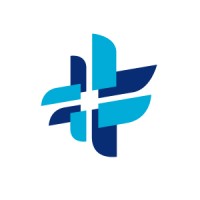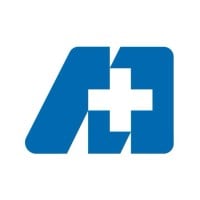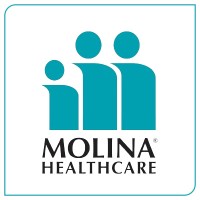
Kaleida Health Company Cyber Security Posture
kaleidahealth.orgKaleida Health is the largest healthcare provider in Western New York, serving the area's eight counties with state-of-the-art technology and comprehensive healthcare services. Its expert, compassionate healthcare professionals are committed to providing the best possible outcomes and experience for patients and visitors. More than one million sick or injured patients choose a Kaleida Health facility annually, including Buffalo General Medical Center/Gates Vascular Institute, DeGraff Medical Park, Millard Fillmore Suburban Hospital, John R. Oishei Children's Hospital, and Bradford Regional Medical Center and Olean General Hospital. Accredited by Det Norske Veritas (DNV) Healthcare, Inc., Kaleida Health also provides important services through two long-term care facilities, outpatient clinics, and home health care through the Visiting Nursing Association of WNY, Inc. In addition, Kaleida Health’s hospitals support residency training programs of the University at Buffalo School of Medicine and Biomedical Sciences, training hundreds of residents each year.
Kaleida Health Company Details
kaleida-health
4729 employees
23615.0
62
Hospitals and Health Care
kaleidahealth.org
4
KAL_1178897
In-progress
Between 900 and 1000
This score is AI-generated and less favored by cyber insurers, who prefer the TPRM score.
 Kaleida Health Global Score
Kaleida Health Global Score.png)

Kaleida Health Company Scoring based on AI Models
| Model Name | Date | Description | Current Score Difference | Score |
|---|---|---|---|---|
| AVERAGE-Industry | 03-12-2025 | This score represents the average cybersecurity rating of companies already scanned within the same industry. It provides a benchmark to compare an individual company's security posture against its industry peers. | N/A | Between 900 and 1000 |
Kaleida Health Company Cyber Security News & History
| Entity | Type | Severity | Impact | Seen | Url ID | Details | View |
|---|---|---|---|---|---|---|---|
| Kaleida Health | Breach | 60 | 3 | 08/2017 | KAL185381122 | Link | |
Rankiteo Explanation : Attack with significant impact with internal employee data leaksDescription: Kaleida Health suffered from a data breach incident after an unauthorized third party potentially accessed an employee’s email account. The compromised information includes a small number of Kaleida Health email accounts, which included patients’ names, medical record numbers, dates of birth, diagnoses, treatment information, or other clinical information. Social Security numbers and financial information were not contained in the email accounts. They immediately investigated the incident and hired a leading outside computer forensic firm to assist it and enhanced security measures relating to the protection of patient information. | |||||||
Kaleida Health Company Subsidiaries

Kaleida Health is the largest healthcare provider in Western New York, serving the area's eight counties with state-of-the-art technology and comprehensive healthcare services. Its expert, compassionate healthcare professionals are committed to providing the best possible outcomes and experience for patients and visitors. More than one million sick or injured patients choose a Kaleida Health facility annually, including Buffalo General Medical Center/Gates Vascular Institute, DeGraff Medical Park, Millard Fillmore Suburban Hospital, John R. Oishei Children's Hospital, and Bradford Regional Medical Center and Olean General Hospital. Accredited by Det Norske Veritas (DNV) Healthcare, Inc., Kaleida Health also provides important services through two long-term care facilities, outpatient clinics, and home health care through the Visiting Nursing Association of WNY, Inc. In addition, Kaleida Health’s hospitals support residency training programs of the University at Buffalo School of Medicine and Biomedical Sciences, training hundreds of residents each year.
Access Data Using Our API

Get company history
.png)
Kaleida Health Cyber Security News
Impacts from global IT outage: Microsoft releases recovery tool, CISA warns of phishing attempts
Microsoft suffered a global IT outage Friday morning that has been blamed on a faulty software update from cybersecurity company CrowdStrike, ...
Kaleida Health becomes sixth health-care victim of security breach
BUFFALO, N.Y. — Kaleida Health is the latest Buffalo health-care organization affected by a technology security breach. The Buffalo hospital ...
At least 12 major hospitals, health systems affected by global IT outage
Hospitals and health systems across the United States were among the industries affected by the global IT outage on Friday morning.
Hackers breach New York's largest provider with phishing attacks
Kaleida Health, New York's largest provider, is once again notifying patients of a phishing incident. This one involves 744 patients.
Buffalo hospitals cautiously seek innovative medical applications of AI
Local doctors, researchers and administrators are excited by the impact artificial intelligence could have on the health care industry.
Cyber outage forces radiologists to transcribe reports, delay nonurgent cases
The nonmalicious global technology glitch first occurred the morning of July 19 stemming from a faulty software update issued by cybersecurity ...
CrowdStrike outage hits US hospitals
CrowdStrike, a growing cybersecurity firm, unwittingly triggered a massive IT outage on Friday, disrupting businesses, including healthcare.
Kaleida Health ERISA lawsuit can proceed, judge rules
A U.S. District judge in Rochester, N.Y., refused to dismiss charges against two retirement plans run by Kaleida Health, filed by current and ...

Kaleida Health Similar Companies

BayCare Health System
BayCare is a leading not-for-profit health care system that connects individuals and families to a wide range of services at 16 hospitals and hundreds of other convenient locations throughout the Tampa Bay and central Florida regions. Inpatient and outpatient services include acute care, primary car

MultiCare Health System
MultiCare’s roots in the Pacific Northwest go back to 1882, with the founding of Tacoma’s first hospital. Over the years, we’ve grown from a Tacoma-centric, hospital-based organization into the largest, community-based, locally governed health system in the state of Washington. Today, our comprehe

Molina Healthcare
Molina Healthcare is a FORTUNE 500 company that is focused exclusively on government-sponsored health care programs for families and individuals who qualify for government sponsored health care. Molina Healthcare contracts with state governments and serves as a health plan providing a wide range o

BJC Health System
BJC Health System is one of the largest nonprofit health care organizations in the United States and the largest in the state of Missouri, serving urban, suburban, and rural communities across Missouri, southern Illinois, eastern Kansas, and the greater Midwest region. One of the largest employers i

Geisinger
Geisinger is among the nation’s leading providers of value-based care, serving 1.2 million people in urban and rural communities across Pennsylvania. Founded in 1915 by philanthropist Abigail Geisinger, the nonprofit system generates $10 billion in annual revenues across 126 care sites — including 1

Servei de Salut de les Illes Balears
1. Misión El Servicio de Salud de las Islas Baleares tiene como misión proveer de servicios sanitarios públicos a sus usuarios a fin de satisfacer sus necesidades de salud, bajo los principios de equidad, eficiencia y calidad y por medio del desarrollo de actividades de promoción, prevención, cu

Frequently Asked Questions (FAQ) on Cybersecurity Incidents
Kaleida Health CyberSecurity History Information
Total Incidents: According to Rankiteo, Kaleida Health has faced 1 incidents in the past.
Incident Types: The types of cybersecurity incidents that have occurred include ['Breach'].
Total Financial Loss: The total financial loss from these incidents is estimated to be {total_financial_loss}.
Cybersecurity Posture: The company's overall cybersecurity posture is described as Kaleida Health is the largest healthcare provider in Western New York, serving the area's eight counties with state-of-the-art technology and comprehensive healthcare services. Its expert, compassionate healthcare professionals are committed to providing the best possible outcomes and experience for patients and visitors. More than one million sick or injured patients choose a Kaleida Health facility annually, including Buffalo General Medical Center/Gates Vascular Institute, DeGraff Medical Park, Millard Fillmore Suburban Hospital, John R. Oishei Children's Hospital, and Bradford Regional Medical Center and Olean General Hospital. Accredited by Det Norske Veritas (DNV) Healthcare, Inc., Kaleida Health also provides important services through two long-term care facilities, outpatient clinics, and home health care through the Visiting Nursing Association of WNY, Inc. In addition, Kaleida Health’s hospitals support residency training programs of the University at Buffalo School of Medicine and Biomedical Sciences, training hundreds of residents each year..
Detection and Response: The company detects and responds to cybersecurity incidents through {description_of_detection_and_response_process}.
Incident Details
Incident 1: Ransomware Attack
Title: {Incident_Title}
Description: {Brief_description_of_the_incident}
Date Detected: {Detection_Date}
Date Publicly Disclosed: {Disclosure_Date}
Date Resolved: {Resolution_Date}
Type: {Type_of_Attack}
Attack Vector: {Attack_Vector}
Vulnerability Exploited: {Vulnerability}
Threat Actor: {Threat_Actor}
Motivation: {Motivation}
Incident 2: Data Breach
Title: {Incident_Title}
Description: {Brief_description_of_the_incident}
Date Detected: {Detection_Date}
Date Publicly Disclosed: {Disclosure_Date}
Date Resolved: {Resolution_Date}
Type: {Type_of_Attack}
Attack Vector: {Attack_Vector}
Vulnerability Exploited: {Vulnerability}
Threat Actor: {Threat_Actor}
Motivation: {Motivation}
Common Attack Types: As of now, the company has not encountered any reported incidents involving common cyberattacks.
Identification of Attack Vectors: The company identifies the attack vectors used in incidents through {description_of_identification_process}.
Impact of the Incidents
Incident 1: Ransomware Attack
Financial Loss: {Financial_Loss}
Data Compromised: {Data_Compromised}
Systems Affected: {Systems_Affected}
Downtime: {Downtime}
Operational Impact: {Operational_Impact}
Conversion Rate Impact: {Conversion_Rate_Impact}
Revenue Loss: {Revenue_Loss}
Customer Complaints: {Customer_Complaints}
Brand Reputation Impact: {Brand_Reputation_Impact}
Legal Liabilities: {Legal_Liabilities}
Identity Theft Risk: {Identity_Theft_Risk}
Payment Information Risk: {Payment_Information_Risk}
Incident 2: Data Breach
Financial Loss: {Financial_Loss}
Data Compromised: {Data_Compromised}
Systems Affected: {Systems_Affected}
Downtime: {Downtime}
Operational Impact: {Operational_Impact}
Conversion Rate Impact: {Conversion_Rate_Impact}
Revenue Loss: {Revenue_Loss}
Customer Complaints: {Customer_Complaints}
Brand Reputation Impact: {Brand_Reputation_Impact}
Legal Liabilities: {Legal_Liabilities}
Identity Theft Risk: {Identity_Theft_Risk}
Payment Information Risk: {Payment_Information_Risk}
Average Financial Loss: The average financial loss per incident is {average_financial_loss}.
Commonly Compromised Data Types: The types of data most commonly compromised in incidents are {list_of_commonly_compromised_data_types}.
Incident 1: Ransomware Attack
Entity Name: {Entity_Name}
Entity Type: {Entity_Type}
Industry: {Industry}
Location: {Location}
Size: {Size}
Customers Affected: {Customers_Affected}
Incident 2: Data Breach
Entity Name: {Entity_Name}
Entity Type: {Entity_Type}
Industry: {Industry}
Location: {Location}
Size: {Size}
Customers Affected: {Customers_Affected}
Response to the Incidents
Incident 1: Ransomware Attack
Incident Response Plan Activated: {Yes/No}
Third Party Assistance: {Yes/No}
Law Enforcement Notified: {Yes/No}
Containment Measures: {Containment_Measures}
Remediation Measures: {Remediation_Measures}
Recovery Measures: {Recovery_Measures}
Communication Strategy: {Communication_Strategy}
Adaptive Behavioral WAF: {Adaptive_Behavioral_WAF}
On-Demand Scrubbing Services: {On_Demand_Scrubbing_Services}
Network Segmentation: {Network_Segmentation}
Enhanced Monitoring: {Enhanced_Monitoring}
Incident 2: Data Breach
Incident Response Plan Activated: {Yes/No}
Third Party Assistance: {Yes/No}
Law Enforcement Notified: {Yes/No}
Containment Measures: {Containment_Measures}
Remediation Measures: {Remediation_Measures}
Recovery Measures: {Recovery_Measures}
Communication Strategy: {Communication_Strategy}
Adaptive Behavioral WAF: {Adaptive_Behavioral_WAF}
On-Demand Scrubbing Services: {On_Demand_Scrubbing_Services}
Network Segmentation: {Network_Segmentation}
Enhanced Monitoring: {Enhanced_Monitoring}
Incident Response Plan: The company's incident response plan is described as {description_of_incident_response_plan}.
Third-Party Assistance: The company involves third-party assistance in incident response through {description_of_third_party_involvement}.
Data Breach Information
Incident 2: Data Breach
Type of Data Compromised: {Type_of_Data}
Number of Records Exposed: {Number_of_Records}
Sensitivity of Data: {Sensitivity_of_Data}
Data Exfiltration: {Yes/No}
Data Encryption: {Yes/No}
File Types Exposed: {File_Types}
Personally Identifiable Information: {Yes/No}
Prevention of Data Exfiltration: The company takes the following measures to prevent data exfiltration: {description_of_prevention_measures}.
Handling of PII Incidents: The company handles incidents involving personally identifiable information (PII) through {description_of_handling_process}.
Ransomware Information
Incident 1: Ransomware Attack
Ransom Demanded: {Ransom_Amount}
Ransom Paid: {Ransom_Paid}
Ransomware Strain: {Ransomware_Strain}
Data Encryption: {Yes/No}
Data Exfiltration: {Yes/No}
Ransom Payment Policy: The company's policy on paying ransoms in ransomware incidents is described as {description_of_ransom_payment_policy}.
Data Recovery from Ransomware: The company recovers data encrypted by ransomware through {description_of_data_recovery_process}.
Regulatory Compliance
Incident 1: Ransomware Attack
Regulations Violated: {Regulations_Violated}
Fines Imposed: {Fines_Imposed}
Legal Actions: {Legal_Actions}
Regulatory Notifications: {Regulatory_Notifications}
Incident 2: Data Breach
Regulations Violated: {Regulations_Violated}
Fines Imposed: {Fines_Imposed}
Legal Actions: {Legal_Actions}
Regulatory Notifications: {Regulatory_Notifications}
Regulatory Frameworks: The company complies with the following regulatory frameworks regarding cybersecurity: {list_of_regulatory_frameworks}.
Ensuring Regulatory Compliance: The company ensures compliance with regulatory requirements through {description_of_compliance_measures}.
Lessons Learned and Recommendations
Incident 1: Ransomware Attack
Lessons Learned: {Lessons_Learned}
Incident 2: Data Breach
Lessons Learned: {Lessons_Learned}
Incident 1: Ransomware Attack
Recommendations: {Recommendations}
Incident 2: Data Breach
Recommendations: {Recommendations}
Key Lessons Learned: The key lessons learned from past incidents are {list_of_key_lessons_learned}.
Implemented Recommendations: The company has implemented the following recommendations to improve cybersecurity: {list_of_implemented_recommendations}.
References
Additional Resources: Stakeholders can find additional resources on cybersecurity best practices at {list_of_additional_resources}.
Investigation Status
Incident 1: Ransomware Attack
Investigation Status: {Investigation_Status}
Incident 2: Data Breach
Investigation Status: {Investigation_Status}
Communication of Investigation Status: The company communicates the status of incident investigations to stakeholders through {description_of_communication_process}.
Stakeholder and Customer Advisories
Incident 1: Ransomware Attack
Stakeholder Advisories: {Stakeholder_Advisories}
Customer Advisories: {Customer_Advisories}
Incident 2: Data Breach
Stakeholder Advisories: {Stakeholder_Advisories}
Customer Advisories: {Customer_Advisories}
Advisories Provided: The company provides the following advisories to stakeholders and customers following an incident: {description_of_advisories_provided}.
Initial Access Broker
Incident 1: Ransomware Attack
Entry Point: {Entry_Point}
Reconnaissance Period: {Reconnaissance_Period}
Backdoors Established: {Backdoors_Established}
High Value Targets: {High_Value_Targets}
Data Sold on Dark Web: {Yes/No}
Incident 2: Data Breach
Entry Point: {Entry_Point}
Reconnaissance Period: {Reconnaissance_Period}
Backdoors Established: {Backdoors_Established}
High Value Targets: {High_Value_Targets}
Data Sold on Dark Web: {Yes/No}
Monitoring and Mitigation of Initial Access Brokers: The company monitors and mitigates the activities of initial access brokers through {description_of_monitoring_and_mitigation_measures}.
Post-Incident Analysis
Incident 1: Ransomware Attack
Root Causes: {Root_Causes}
Corrective Actions: {Corrective_Actions}
Incident 2: Data Breach
Root Causes: {Root_Causes}
Corrective Actions: {Corrective_Actions}
Post-Incident Analysis Process: The company's process for conducting post-incident analysis is described as {description_of_post_incident_analysis_process}.
Corrective Actions Taken: The company has taken the following corrective actions based on post-incident analysis: {list_of_corrective_actions_taken}.
Additional Questions
General Information
Ransom Payment History: The company has {paid/not_paid} ransoms in the past.
Last Ransom Demanded: The amount of the last ransom demanded was {last_ransom_amount}.
Last Attacking Group: The attacking group in the last incident was {last_attacking_group}.
Incident Details
Most Recent Incident Detected: The most recent incident detected was on {most_recent_incident_detected_date}.
Most Recent Incident Publicly Disclosed: The most recent incident publicly disclosed was on {most_recent_incident_publicly_disclosed_date}.
Most Recent Incident Resolved: The most recent incident resolved was on {most_recent_incident_resolved_date}.
Impact of the Incidents
Highest Financial Loss: The highest financial loss from an incident was {highest_financial_loss}.
Most Significant Data Compromised: The most significant data compromised in an incident was {most_significant_data_compromised}.
Most Significant System Affected: The most significant system affected in an incident was {most_significant_system_affected}.
Response to the Incidents
Third-Party Assistance in Most Recent Incident: The third-party assistance involved in the most recent incident was {third_party_assistance_in_most_recent_incident}.
Containment Measures in Most Recent Incident: The containment measures taken in the most recent incident were {containment_measures_in_most_recent_incident}.
Data Breach Information
Most Sensitive Data Compromised: The most sensitive data compromised in a breach was {most_sensitive_data_compromised}.
Number of Records Exposed: The number of records exposed in the most significant breach was {number_of_records_exposed}.
Ransomware Information
Highest Ransom Demanded: The highest ransom demanded in a ransomware incident was {highest_ransom_demanded}.
Highest Ransom Paid: The highest ransom paid in a ransomware incident was {highest_ransom_paid}.
Regulatory Compliance
Highest Fine Imposed: The highest fine imposed for a regulatory violation was {highest_fine_imposed}.
Most Significant Legal Action: The most significant legal action taken for a regulatory violation was {most_significant_legal_action}.
Lessons Learned and Recommendations
Most Significant Lesson Learned: The most significant lesson learned from past incidents was {most_significant_lesson_learned}.
Most Significant Recommendation Implemented: The most significant recommendation implemented to improve cybersecurity was {most_significant_recommendation_implemented}.
References
Most Recent Source: The most recent source of information about an incident is {most_recent_source}.
Most Recent URL for Additional Resources: The most recent URL for additional resources on cybersecurity best practices is {most_recent_url}.
Investigation Status
Current Status of Most Recent Investigation: The current status of the most recent investigation is {current_status_of_most_recent_investigation}.
Stakeholder and Customer Advisories
Most Recent Stakeholder Advisory: The most recent stakeholder advisory issued was {most_recent_stakeholder_advisory}.
Most Recent Customer Advisory: The most recent customer advisory issued was {most_recent_customer_advisory}.
Initial Access Broker
Most Recent Entry Point: The most recent entry point used by an initial access broker was {most_recent_entry_point}.
Most Recent Reconnaissance Period: The most recent reconnaissance period for an incident was {most_recent_reconnaissance_period}.
Post-Incident Analysis
Most Significant Root Cause: The most significant root cause identified in post-incident analysis was {most_significant_root_cause}.
Most Significant Corrective Action: The most significant corrective action taken based on post-incident analysis was {most_significant_corrective_action}.
What Do We Measure?
















Every week, Rankiteo analyzes billions of signals to give organizations a sharper, faster view of emerging risks. With deeper, more actionable intelligence at their fingertips, security teams can outpace threat actors, respond instantly to Zero-Day attacks, and dramatically shrink their risk exposure window.
These are some of the factors we use to calculate the overall score:
Identify exposed access points, detect misconfigured SSL certificates, and uncover vulnerabilities across the network infrastructure.
Gain visibility into the software components used within an organization to detect vulnerabilities, manage risk, and ensure supply chain security.
Monitor and manage all IT assets and their configurations to ensure accurate, real-time visibility across the company's technology environment.
Leverage real-time insights on active threats, malware campaigns, and emerging vulnerabilities to proactively defend against evolving cyberattacks.




